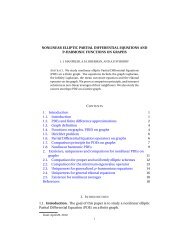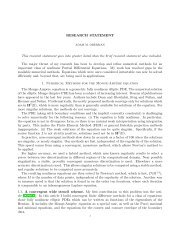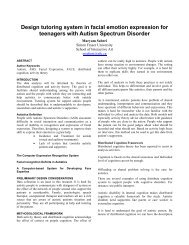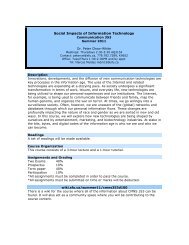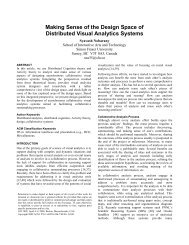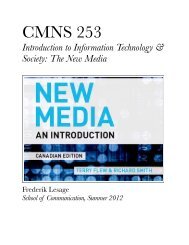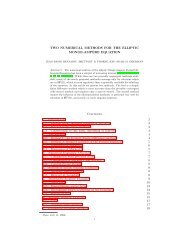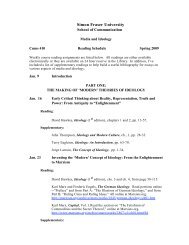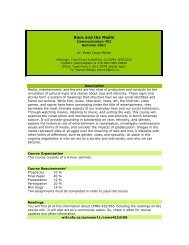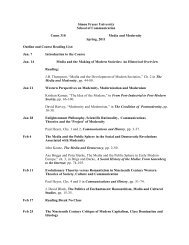CMNS 253 Syllabus - SFU Wiki
CMNS 253 Syllabus - SFU Wiki
CMNS 253 Syllabus - SFU Wiki
You also want an ePaper? Increase the reach of your titles
YUMPU automatically turns print PDFs into web optimized ePapers that Google loves.
Chapter 4Attention, And Other 21st-Century Social Media LiteraciesHoward Rheingold© 2010 Howard Rheingold. The text of this article is licensed under the Creative CommonsAttribution NonCommercial License (http://creativecommons.org/licenses/by-nc/3.0).EDUCAUSE Review, vol. 45, no. 5 (September/October 2010): 14–24Howard RheingoldHoward Rheingold (howard@rheingold.com) is the author of Tools For Thought, TheVirtual Community, Smart Mobs, and other books and is currently lecturer at the University ofCalifornia, Berkeley, and Stanford University.If you were the only person on earth who knew how to use a fishing rod, you would betremendously empowered. If you were the only person on earth who knew how to read andwrite, you would be frustrated and empowered only in tiny ways, like writing notes to yourself.When it comes to social media, knowing how to post a video or download a podcast—technology-centric encoding and decoding skills—is not enough. Access to many mediaempowers only those who know how to use them. We need to go beyond skills and technologies.We need to think in terms of literacies. And we need to expand our thinking of digital skills orinformation literacies to include social media literacies.Social media—networked digital media such as Facebook, Twitter, blogs, and wikis—enablepeople to socialize, organize, learn, play, and engage in commerce. The part that makes socialmedia social is that technical skills need to be exercised in concert with others: encoding,decoding, and community.I focus on five social media literacies:AttentionParticipationCollaborationNetwork awarenessCritical consumption



